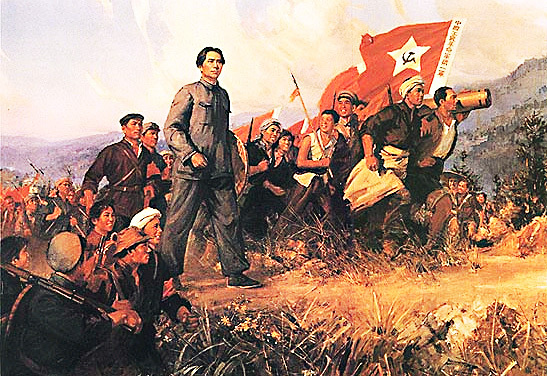JULY 21, 2020 – On the porch recently, my wife and I were immersed in novels by Lisa See; stories about modern China. In each, the Cultural Revolution figured prominently.
“When did Mao take over?” My wife asked, breaking the silence.
“1949,” I said.
Silence returned.
Coincidentally, days later an acquaintance dropped off a book. “I was supposed to give this to you,” he said. His source: another Eric—the affable doorman at my sister and brother-in-law’s Minneapolis apartment. Pre-Covid I’d struck up a conversation with the doorman. Curious about his background, I’d learned he was a retired history teacher at a local, prestigious private high school. His concentration was Chinese history. When I expressed intimidation by the depth of that subject, he promised to put some books in my hands to “get me started.”
The title of the first: The Gate of Heavenly Peace – The Chinese and Their Revolution 1895 – 1980 by Jonathan Spence, an English-born professor emeritus at Yale. I was intrigued that 1949 was 54 years into the 85 years of Professor Spence’s revolutionary timeline.
The same day I finished Lisa See’s novel, I opened The Gate of Heavenly Peace. I haven’t put it down.
To better understand the world in this Age of Interdependence, I’ve been studying this book, not just reading it. For retention, I’m compelled to deploy special modes of “adhesion.”
Spence builds his story around a number of scholar-activists, their ideas, and the roles they played in the downfall of the Qing Dynasty and the rise and disappointment of republicanism. Over time, steps and setbacks, progression and regression, actions and reactions led to full-scale revolution, destruction, recreation, and . . . one helluva head-spinning story.
This was my very first encounter with names of prominent Chinese writers, poets, thinkers—Kang Youngwei, Qiu Jin, Lu Xun, Liang Qichao, Liang Ji, Zou Rong, Chen Duxiu, to name a few. I now know each as if s/he were an acquaintance met aboard a long train ride. In earlier days I would’ve passed by these passengers and quite likely eschewed altogether such a long trip through China in the 1890s and 19-teens. I’d have flown straight to 1949, the Long March, and Mao Zedong’s Communist Revolution—by-passing the study of decades essential to a deeper, broader understanding.
Then come places. Heretofore my grasp of Chinese geography was as wanting as my knowledge of Chinese history. The map in Spence’s book is a simple remedy. It lays out provincial names and borders and identifies major cities. But to gain a deeper grasp of the “lay of the land,” I hauled out our gigantic National Geographic World Atlas. My sub-mission: memorizing names, locations of all provinces of China and their capitals.
Then there’s my pen. I use it as a hiking staff on the steep trail up difficult terrain. No page goes unmarked. Underlines, margin notes, cross-references—the book is becoming as blue with my markings as it is black with original print.
It’s a long march, but the vistas are stunning.
(Remember to subscribe to this blog and receive notifications of new posts by email.)
© 2020 by Eric Nilsson

1 Comment
I’m sure you’d like the author’s “The Search For Modern China” and “God’s Chinese Son” as well. Spence is a lovely man; he’s the stepfather of two of my mother’s former piano students.
Comments are closed.